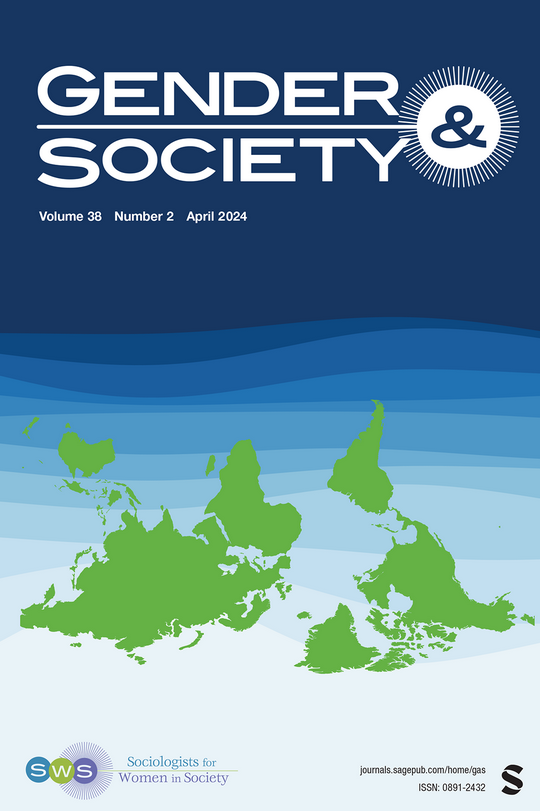The Discursive Work of “Bottom-Shaming”: Sexual Positioning Discourse in the Construction of Black Masculinity
IF 7.2
1区 社会学
Q1 SOCIOLOGY
引用次数: 1
Abstract
This article uses ethnographic data and interviews with young Black gay cisgender men to illustrate how masculinity is interactionally created and policed within gay communities. Here, I specifically highlight the ways Black masculinity is constructed against Latino and white men’s masculinity, discursively situating this masculinity within a racial hierarchy celebrating hypermasculinity among Black men. Black masculinity is further policed within Black gay communities through what I term sexual positioning discourse. Through the use of sexual positions within gay relationships (e.g., “top,” “bottom,” “versatile”), peers shame the act of bottoming to interactionally shore up their own masculinity through a ritualistic emasculation of other men, which simultaneously denigrates the social position of women and femininity. Building on prior empirical and theoretical work examining the use of homophobic discourse among straight men as playing a critical role in their constructions of masculinity, I show similarities and differences through an examination of gender and sexual discourse mobilized within gay communities and by Black gay cis men. Sexual positioning discourse is integral to masculinity boundary work among gay men, yet when employed by heterosexual men, this discourse calls their sexuality into question. Specifically, when Black gay men mobilize sexual positioning discourse, it serves to assert their claims to Black masculinity relative to one another; whereas when straight men use the same discourse it serves to cast doubt on their claims to “straight” sexual identities.“底层羞耻”话语:黑人男性气质建构中的性定位话语
本文使用人种学数据和对年轻黑人同性恋顺性别男性的采访,来说明男性气质是如何在同性恋社区中互动创造和监管的。在这里,我特别强调了黑人男子气概是如何与拉丁裔和白人男性的男子气概相抗衡的,并将这种男子气概置于庆祝黑人男性超男子气概的种族等级制度中。通过我所说的性定位话语,黑人的男子气概在黑人同性恋社区中得到了进一步的监管。通过在同性恋关系中使用性地位(例如,“顶部”、“底部”、“多才多艺”),同龄人对通过仪式性地阉割其他男性来相互支持自己的男性气概的触底行为感到羞耻,这同时诋毁了女性的社会地位和女性气质。在之前的实证和理论工作的基础上,我研究了直男中恐同话语的使用,认为这在他们的男性气质建构中发挥着关键作用,通过对同性恋社区内和黑人同性恋独联体男性动员的性别和性话语的研究,我展示了相似之处和差异之处。性定位话语是男同性恋者男性气质边界工作的组成部分,但当被异性恋男性雇佣时,这种话语会让他们的性取向受到质疑。具体而言,当黑人男同性恋动员性定位话语时,这有助于维护他们对黑人男子气概的相对主张;而当直男使用同样的话语时,这会让人怀疑他们对“异性恋”性身份的说法。
本文章由计算机程序翻译,如有差异,请以英文原文为准。
求助全文
约1分钟内获得全文
求助全文
来源期刊

Gender & Society
Multiple-
CiteScore
9.70
自引率
3.60%
发文量
78
期刊介绍:
Gender & Society promotes feminist scholarship and the social scientific study of gender. Gender & Society publishes theoretically engaged and methodologically rigorous articles that make original contributions to gender theory. The journal takes a multidisciplinary, intersectional, and global approach to gender analyses.
 求助内容:
求助内容: 应助结果提醒方式:
应助结果提醒方式:


